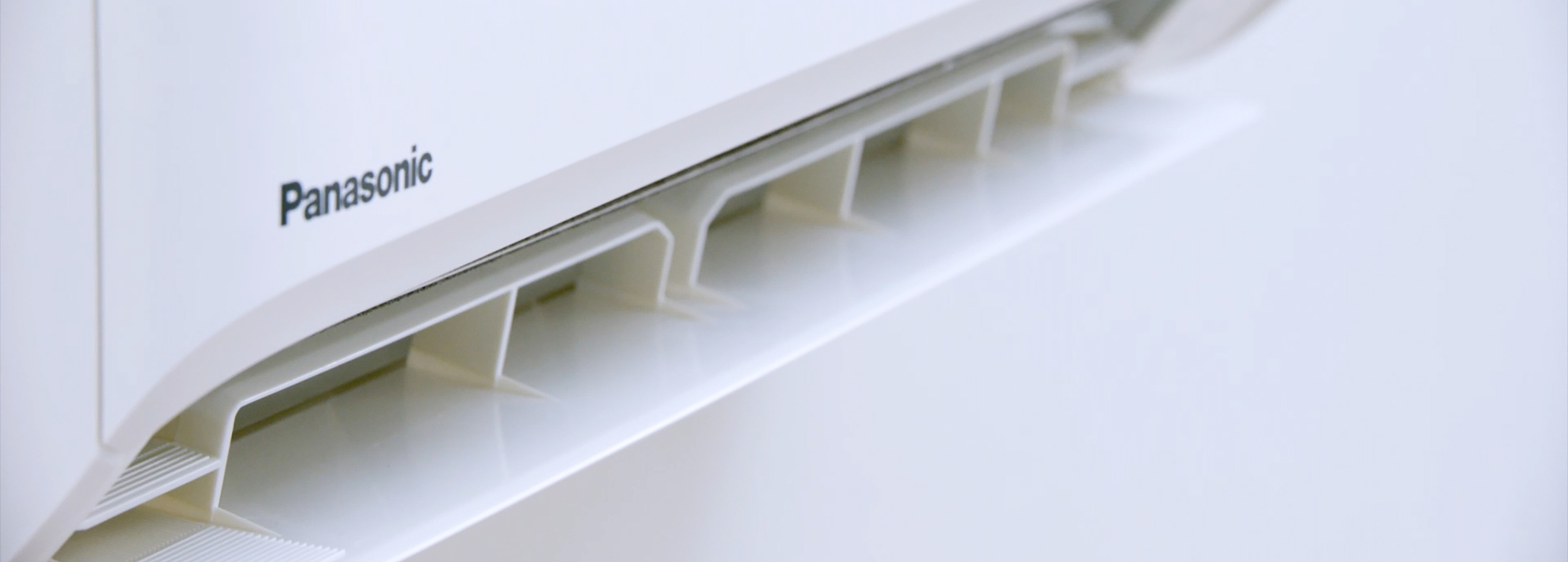Mould in your air conditioner is more
common than you think
Table of Contents
● Mould in your air conditioner causes health risks
● Watch out for the signs: Mould symptoms in your air conditioner
● How mould grows in air conditioners
● How to prevent mould in your air conditioner
● How to remove mould inside your air conditioner
● Look after your air conditioner – and your health
When your air conditioner is working as it should, it’s easy to forget about what’s happening inside it.
But that can be a dangerous trap to fall into, especially with a piece of equipment that has so much influence over the air quality of your home.
When you’re not paying attention, mould in your air conditioner unit can easily grow unnoticed.
And when your air conditioner pumps that mould into the air around you, it can pose a serious risk to your health.
Mould in your air conditioner causes health risks

Mould can be a cause for concern anywhere in your home, but it’s especially worrying when it’s being spread around the room by your air conditioner.
Mould growing in your air conditioner can have a wide range of effects, ranging from mild symptoms to serious illness.
How mould spreads into the air
When mould grows in your air conditioner, microscopic spores can be blown out through the air conditioner’s vents.
These spores land on your skin or can easily be inhaled, especially when they have been carried across the room by the waft of air from your air conditioner. Once inhaled, these spores can cause a whole range of respiratory issues.
Health risks of mould on the skin
When mould spores land on your skin, they can cause an allergic reaction. This can manifest in the form of itching or a mild rash. If mould spores land on broken skin, they can even cause a serious skin infection.

Internal health risks of mould
On the milder end of the spectrum, you might find that mould from your air conditioner gives you a runny nose or itchy eyes.
But these symptoms can quickly evolve into serious threats to your health. Mould in your air conditioner can lead to sickness in a variety of ways, from severe respiratory symptoms like shortness of breath and wheezing to nausea, vomiting, or dizziness. Over time, exposure to mould in the air can inflame the airway and lungs, leading to sinusitis, bronchitis, or even pneumonia and asthma attacks.
Watch out for the signs: Mould symptoms in your air conditioner
It’s difficult to identify mould when it first starts growing in your air conditioner, but there are a few ways to catch it before it becomes a serious problem.
● A musty odour – You might notice that your house smells stale or earthy – lots of people compare the scent to the musty smell of wet socks.
● Mould in or on your air conditioner – Although mould prefers dark, damp spaces, as it spreads you might notice mould on both the inside and the outside of yourair conditioner. Inside the machine, you might notice mould on the AC coils, filters, ducts, vents, or often in the AC drain ine where water can collect. While outside the machine, you can find mould on the exterior of the air conditioner itself, on the air handler, as well as on the AC cabinet insulation.
How mould grows in air conditioners
You probably remember from your biology lessons that mould prefers dark, damp, warm spaces.
That’s why lots of people are surprised to find it in their air conditioners, which they associate with dry, cold air.
But the inside of your conditioner is a very different environment.
● Moisture – In the process of cooling the air in your room, air conditioners remove moisture from the air around them. Some of this moisture condenses as it passes through the inside of your air conditioner, creating the perfect environment for mould to grow.
● Dust and skin particles – Every time you move, you shed tiny particles of skin. These particles – along with any dust or pollen that happens to be floating around your home – are sucked up by your air conditioner, becoming food for the mould inside.
● Temperature – In the process of cooling the air around it, parts of your air conditioner can actually become quite warm, forming the perfect, comfortable environment for mould to grow.
How to prevent mould in your air conditioner
If you’re worried about mould growing in your air conditioner, don’t panic! There are a number of ways to stop mould from getting a foothold.
Continually wipe down the air conditioner
One of the simplest yet most effective steps to prevent mould growth in your air conditioner is by keeping it consistently clean. Regularly maintaining the cleanliness of your machine will reduce the chance of bacteria growth and allows any mould spores to be eliminated before they have a chance to grow.
It is also a good idea to keep areas surrounding the air conditioner clean. This reduces the chances of exterior dirt and mould particles being sucked into your unit and causing further growth inside your machine.
Regularly clean the filters
Remove buildup from your air conditioner filters regularly – most experts recommend every 30 to 90 days. You should also keep a close eye on when your filters are wearing out, so you can replace them with fresh ones.
Don’t shut off your air conditioning for too long
It’s tempting to save power by turning your AC off whenever you go away, or leaving it off during the winter months when your room is cooler. But mould can easily build up in your air conditioner when it’s left untouched for long periods of time. If you want to save some power, you can turn up the target temperature so that your air conditioner isn’t running for long periods of time.

Use a Panasonic air conditioner equipped with a nanoe™ X internal cleaning function
Interfering with mould’s ability to grow in your air conditioner is a good start, but it’s really only the beginning.
Panasonic air conditioners equipped with an internal cleaning function with nanoe™ X Generator Mark 3 can inhibit the growth of mould inside the air conditioner.*¹
> Learn more about nanoe™ X Generator Mark 3

Has mould already made its way inside your air conditioner? It’s not too late. How you deal with the problem will generally depend on the severity of the mould infestation.
Clean the air conditioner yourself
You shouldn’t attempt to clean mould out of your air conditioner yourself unless you are properly trained and have the proper equipment. Mould spores can be very dangerous in high concentrations.
If you are qualified and have the right tools at your disposal, you should wear goggles, a face mask, and gloves to reduce your exposure to spores as much as possible.
Hire a professional
Look online for mould removal experts in your area; they’ll have all the proper training and equipment to assess your air conditioner and safely remove all traces of mould.
Often they will also replace your air filters, clean all of the components of your AC, and help you insulate your air conditioner to reduce the likelihood of mould growing again.
Replace the unit
Sometimes, depending on the severity of the mould and the cost of the unit, it might be safer and more cost-effective to replace your air conditioner entirely. Get quotes from professionals to calculate how much a cleaning would cost, and then decide for yourself what would be the most sensible move for you.
Look after your air conditioner – and your health
Mould in your air conditioner can have serious implications for your health, so it’s important to take steps to prevent it from growing – or get rid of it fast when it appears.
The good news is that, once you know the symptoms of mould and have implemented a few simple preventative measures, you can easily keep your air conditioner as fresh and clean as the day it was installed.
One change that can make a major difference? Install Panasonic air conditioners equipped with nanoe™ X Generator Mark 3 to inhibit the growth of mould.
By inhibiting the growth of mold in the air conditioner, nanoe™ X Generator Mark 3 helps your air conditioner do what it does best: keep you cool and comfortable, without compromising on your health.*¹
*1 While this function is effective in inhibiting mould growth, it does not prevent mould from occurring. The mould growth inhibition effect may vary depending on the installation environment and operating time. *When using the nanoe™ X Generator Mark 3 function, a multi-function wired remote control (CZ-10RT4C) is required. (The floor-standing type with a built-in control switch in the main unit can be used.) *Only ON/OFF operation is possible with the multilingual wired remote controller (CZ-10RTF4). Also, local setup is required to use the nanoe™ X Generator Mark 3.








